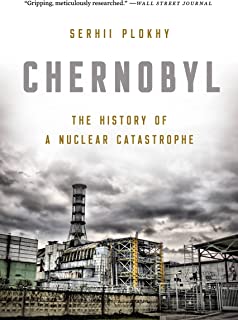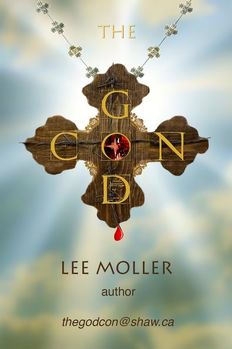 On April 26th, 1986, the Chernobyl nuclear reactor number four exploded. The explosion lifted a more than 200 ton "bio-shield" named Elina into the air, exposing the reactor's core. If you have seen the docudrama about Chernobyl, then you are already aware of much of the contents of this book. I wanted to read it to better understand the physics. What I got was a better understanding of how the worst nuclear disaster in history could have happened at all. The short answer is that the USSR was crumbling, inefficient, and corrupt. The USSR was most concerned about saving face, extolling Soviet science as the best in the world, and doing everything on the cheap. The result was the second major nuclear disaster in the USSR. A weapons-grade plutonium producing reactor in Siberia had a similar meltdown during the height of the cold war, but the USSR was able to keep it secret. In their arrogance, the USSR opted on a graphite moderated reactor design, rather than the water moderated design used everywhere else in the world. They eschewed the giant concrete containment vessels that Western eyes associate with nuclear reactors... thinking themselves too smart, and their reactor designs so safe, that they would never have an accident (again). The Soviets built 10 RBMK (in Russian: High Power Channel Reactor) reactors. These reactors were built by a system that had to deal with vendors who routinely supplied sub-standard goods. Seventy percent of one major vendor's goods were faulty. On one occasion, the Chernobyl plant out-performed its quota by 10%. This was accomplished in part by delaying routine maintenance operations. This sort of thing happened all the time. Here is my major take-away from the book: the Chernobyl accident lead directly to the collapse of the Soviet Union three years later. Ecological activism became associated with anti-nuclear and anti-Soviet feelings. Lithuania and, most importantly, Ukraine, wanted out. Ukraine got out on December 1, 1991. The explosion of reactor number four happened during a test of some of the reactor's emergency systems. The fatal test would, among other things, test the SCRAM (Safety Control Rods Activation Mechanism) functions. To do this, they wanted to simulate power losses on some equipment, such as safety equipment. If you think that sounds stupid, you are right. What happens next is complicated. The boron control rods are tipped with graphite. The boron slows the reaction down and graphite speeds it up. So as the rods go in, the power goes up, and then down. Another accelerating effect involving cavities full of steam (called the positive void effect) also increased power output. Power output went from 200 MWts to 30,000 MWts in just a few seconds. Then it exploded. What happens next was well covered in the docudrama. Chunks of red hot, and extremely radioactive, graphite were lying about on the ground. Fire fighters did not know what to make of them. For some who got too close, it would mean their death. Even remote controlled vehicles could not stand the radiation. Initially, the powers that be relied on dosimeter readings, which indicated a tolerable amount of radiation. They downplayed the severity based on that. But what they chose to ignore was that the numbers that the dosimeters were giving were the maximum they could register! When better meters were used, the true picture came into focus, namely that the radiation was well into the dangerous/lethal zone. Another problem was the water table. More Russian arrogance at work… they should have chosen a sight where ground water was not an issue. If the reactor got to the ground water, another explosion could be expected, along with radioactive water seeping into everything. In a heroic act, miners managed to tunnel under the reactor and freeze the ground solid with liquid nitrogen. They invoked a common Soviet saying: "Who, if not we?" All things considered, the story of Chernobyl could have been much worse. A whole town, many small villages, and thousands of acres of farm land was contaminated in Ukraine, Russia and Belarus. But all told, immediate deaths could be counted on one hand; and the final total, which includes cancers caused by radiation, and guesses on future death tolls is between 4,000 (from the UN) and 90,000 (from Green Peace) souls. I would like to think that the Chernobyl disaster had some positive impacts. As mentioned, it was the catalyst of the fall of the USSR (which Putin is trying to resurrect). No new RBMK reactors are being built. The original plan was shut these reactors down, but that idea was quickly modified when the practical realities were considered. People need power to live. The interior of the Chernobyl sarcophagus will be deadly to human life for 20,000 years. This was a very easy read. It is very well written. The author is aware of the avalanche of Russian names the book presents. He is careful to remind the reader of each players title and position whenever an obscure Russian re-enters the narrative. It has an excellent index. A note about radiation: The units have changed over the years. The old measures are the curie, rad and rem. They are replaced by the becquerel (GBq), gray (Gy), and sievert (Sv). They respectively measure the emitted radiation, the amount of radiation absorbed, and the biological damage done.
0 Comments
|
AuthorLee Moller is a life-long skeptic and atheist and the author of The God Con. Archives
May 2024
Categories
All
|

 RSS Feed
RSS Feed